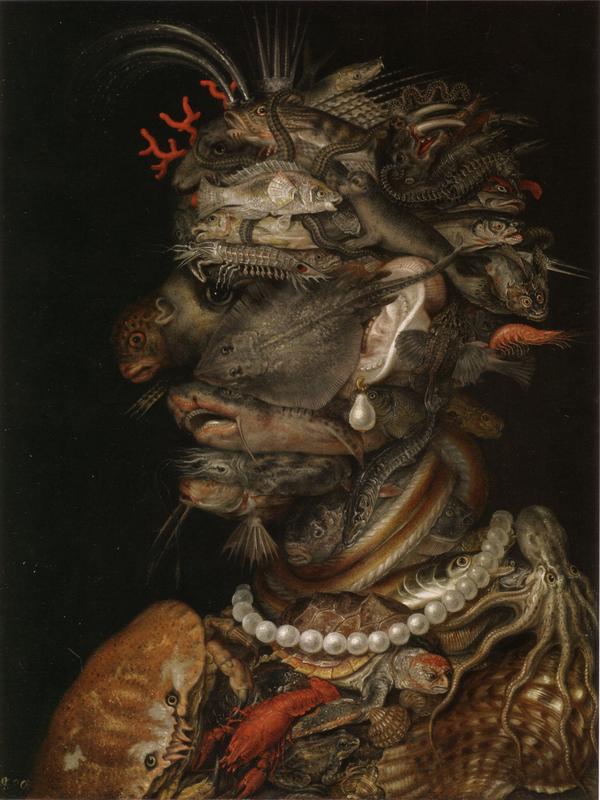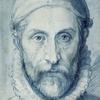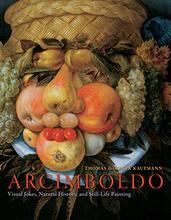More about Water
- All
- Info
- Shop

Contributor
In Water, Arcimboldo uses an extended metaphor, an allegory, to make the forms, curves, and movements of fish, crustaceans, and other aquatic beings stand in for the element of water.
The allegorical mode also operates centrally in the work of Frida Kahlo, Jean-Michel Basquiat, and in Pablo Picasso's Guernica. To use the Idealist language of Piet Mondrian, Arcimboldo "relieves" dozens of fish into an assemblage which contains and represents all of them.
In mathematics, it is possible to represent tensors as multidimensional arrays. The essence of mathematics is the relationship between things, so it helps to think of Arcimboldo's four-part painting cycles Elements, which includes Water, Fire, Air, and Earth, and the Four Seasons, as multidimensional arrays in a field, in the sense that each painting exists and finds its meaning only in relation to the other three parts in each cycle, and the two four-part cycles mirror one another in their uses of tone, mood, gender, symmetry, content and composition. As Thomas DaCosta Kaufmann, the current dean of Arcimboldo Studies, writes, Elements and Four Seasons, "were composed to complement and be displayed together. Two in each set are represented as male–Autumn and Winter; Air and Fire–and two as female: Spring and Summer; Earth and Water. These genders correspond...to their subjects' grammatical genders in Latin and Italian...Two in each series face right and two face left. The corresponding pictures in each set (air/spring; summer/fire; autumn/earth; winter/water) also complement each other in gender and face toward each other."
This symmetrical macro-comment available only to those who follow Kaufmann in zooming out and looking at both cycles, draws upon the idea of spiritual correspondences, in terms of complementary and harmonious polarities such as left/right, inside/outside, good/bad, higher/lower. It comes from the ancient monotheistic response to the Zoroastrian dualist, as quoted by Shai Secunda: "If the upper half of the body is good and the lower half is evil, why does the lower half agree to pass urine for the upper half?" Or as the physician Robert Fludd put it, millennia later, "Man is a whole world of its own, called microcosm for it displays a miniature pattern of all the parts of the universe." The fish and other sea creatures join together to make a human image, because it is the human command of language which groups them together in the name of water. The image of the human reflects the entire environment.
Sources
- Grant, John. Masters of Animation. London: Batsford, 2001.
- Kaufmann, Thomas DaCosta, Arcimboldo: Visual Jokes, Natural History, and Still-Life Painting. Chicago: University of Chicago Press, 2009.
- Kaufmann, Thomas DaCosta. "Arcimboldo's Imperial Allegories." Zeitschrift für Kunstgeschichte, 39 Bd., H. 4 (1976): 275-296.
- Riffard, Pierre A. Dictionnaire de l’ésotérisme. Paris: Payot, 1983.
- Secunda, Shai. "The Iranian Talmud: Reading the Talmud in its Sasanian Context." Library of Congress, Jul. 22, 2014, https://www.loc.gov/item/webcast-6518/.














